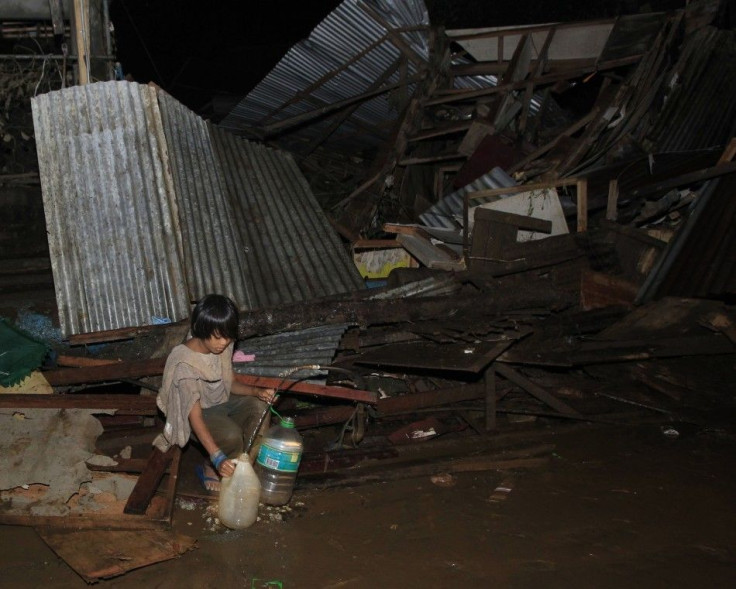Typhoon Washi Kills More than 250 in the Southern Philippines

More than 250 people were killed and almost twice that number were missing after a typhoon hit the southern Philippines, officials said Saturday. The storm triggered flash floods and landslides, forcing tens of thousands from their homes.
Typhoon Washi, with winds gusting as high as 90 kilometers per hour (56 mph), hit the resource-rich island of Mindanao late Friday, bringing heavy rain that also grounded some domestic flights and left wide areas without power.
The Philippine National Red Cross (PNRC) said 256 people were killed in flash floods on Mindanao and another island. Soldiers and police were recovering more bodies washed ashore in nearby towns.
The death toll might still rise because there are still a lot of missing people, said Gwendolyn Pang, secretary general of the PNRC.
She said the hardest-hit areas were in the cities of Iligan and Cagayan de Oro.
Almost 400 people were unaccounted for, most of them from a coastal village in Iligan. Houses were swept into the sea by floodwater while people were sleeping inside late Friday.
The latest Red Cross figures put the death toll in Iligan at 144. Another 86 were killed in Cagayan de Oro, many of them children.
Five miners were killed in a landslide in Monkayo on Mindanao, and another 21 people drowned on the central island of Negros, the PNRC said.
The national disaster agency put the death toll at 131, but other government officials also said at least 256 people had been killed.
The Philippines social-welfare department said about 100,000 people were displaced and brought to more than a dozen shelters in Iligan and Cagayan de Oro.
'We Ran for Our Lives'
An army representative, Col. Leopoldo Galon, said search-and-rescue operations would continue along the shorelines in Misamis Oriental and Lanao del Norte provinces.
I can't explain how these things happened -- entire villages were swept to the sea by flash floods, Galon said.
I have not seen anything like this before. This could be worse than Ondoy, Galon said, referring to a 2009 storm that inundated the capital, Manila, killing hundreds of people.
Television pictures showed bodies covered in mud, cars piled on top of each other, and wrecked homes. Helicopters and boats searched the sea for survivors and victims.
We ran for our lives when we heard a loud whistle blow and was followed by a big bang, Michael Mabaylan, a 38-year-old carpenter, told Reuters. He said his wife and five children were all safe.
Aid worker Crislyn Felisilda said World Vision was concerned about children who became separated from their families or lost their parents.
Many children are looking for their loved ones, she said, adding children were crying and staring into space.
Rescue boats pulled at least 15 people from the sea, another army representative, Lt. Col. Randolph Cabangbang, told reporters.
Iligan City Mayor Lawrence Cruz said many people were caught by surprise when water rose one meter [three feet] high in less than an hour, forcing people onto roofs.
Most of them were already sleeping when floodwaters entered their homes, he said. This is the worst flooding our city had experienced in years.
The national disaster agency said it could not estimate crop and property damage because emergency workers, including soldiers and police officers, were evacuating families and recovering casualties.
Six domestic flights run by Cebu Pacific were canceled due to the rain and near-zero visibility in the southern and central Philippines. Ferry services were also halted, stranding hundreds of people.
An average of 20 typhoons hit the Philippines every year, often causing death and destruction.
(Writing by Manny Mogato; Editing by Paul Tait)
© Copyright Thomson Reuters 2024. All rights reserved.






















